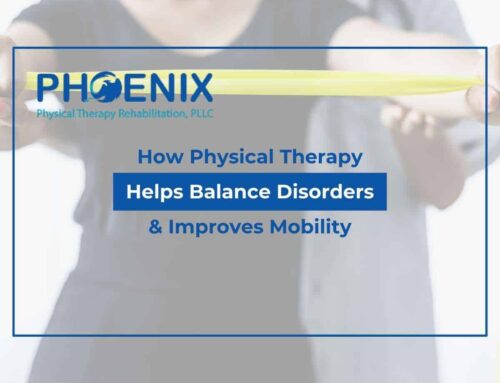Whether it’s something that happened suddenly, like an accident or from something that you’ve been dealing with for a while, your doctor says that you need to go to physical therapy. Thus you go see one and go through the process of having a physical therapist examine you and come up with a plan to get you back to where you were before.
It’s not all done at the gym or at the center. Your physical therapist will tell you that any progress you want to make also has to be achieved at home. Doing these exercises may seem tedious and sometimes even boring, but they are designed with a specific purpose in mind.
Let’s delve a little deeper into the subject of physical therapy and at-home recovery
Why Do I Need To Do At-Home Exercises?
The main reason is that you need to do other things to help get your body back into the condition it once was before your accident or the surgery. It’s like only going to the gym when your trainer is there. You will not get the benefits that you do when you work on your body at home. Otherwise you risk having your progress move far more slowly than you want or even having a relapse of the initial injury.
Your physical therapist will work with you there. He or she will give you a list of things you need to do. Oftentimes you need little to no extra equipment – and the ones that you do are not expensive, like resistance bands. Listen to what the physical therapist tells you to do and you will soon see the progress both at home and in any session that you may have.
People need physical therapy for many things – from having a loss of motion due to an accident or even a stroke. Especially in the case of a stroke, there is a long process of getting back to the person that they used to be and those exercises are even more important to do at home, since they are relearning things taken for granted in the past.
At Home Vs. Clinic
Yes, there are some times that people need to go to a facility, but it’s not always the best answer. For those who are inpatients, staff have to split the time between a lot of patients, which may diminish the one-on-one experience that they need. There is also a possibility that infections may occur at that facility since there are more people and less social distance there.
At home, you can go to a nearby outpatient facility where you can see a physical therapist and get a lot more customized attention since they will have time slots booked just for you and you alone. They can also control the amount of people that come and go more than the inpatient facility – though the recent pandemic may make the outpatient facilities more of the norm. It also tends to cost a lot less to do the rehab at home or an outpatient facility.
Also, a lot of the equipment that you will use at home tends to be on the inexpensive side. You may use some resistance bands that you can buy online for about $15 or less. Perhaps some light weights that cost around $30 or more. These can be used for a range of body parts for exercises that can target nearly any area that the physical therapist would need you to. You may do lunges, bicep curls and many other things. Stretching may also play a big part.
At-Home PT
There is a third option, too. A physical therapist can come to your place and do exercise with you in the comfort of your own home. It will be a familiar environment and you don’t have to worry about traveling. This is especially good for people with extreme mobility issues… like being confined to a wheelchair, for example.
Another benefit is that it can allow both of you to build up a better rapport, since it will be in an environment that you are very familiar with. That can remove a lot of stressors and make for much easier sessions. Doing these exercises with the physical therapist will also translate to being able to do them on your own since you will know exactly what you need to do and what spot in the home you can do it in.
Like many other areas of life, there will need to be a give-and-take with the physical therapist to get things moving. You may need to make some adjustments, like cleaning up beforehand if the physical therapist is allergic to your pet or you may have to make sure that it won’t be an issue with the PT. Be up front about that when you book your first session.
People of all ages can do at-home physical therapy, whether it’s a young child to a live-at-home senior citizen. The physical therapist will always take every condition into consideration and will ensure that the program is specifically tailored to that particular person.
Don’t consider an injury or surgery as a set-back. Physical therapy can help you make great strides, and it’s as easy as doing it in your own living spaces.
The staff at Phoenix Physical Therapy Rehabilitation PLLC know that the road to recovery is a journey and it involves incorporating things into your home life. They will work with you closely and get you on the path that you need to be. There are three convenient locations for you – Brooklyn, and Rosedale. Call today to set up an appointment – at 347-733-1916.
Phoenix Physical Therapy
Rosedale Location
23520 147th Avenue, Suite 1,
Rosedale, NY, 11422
Brooklyn Location
7510 4th Ave., Suite 3,
Brooklyn, NY, 11209
Phone: (347) 733-1916







